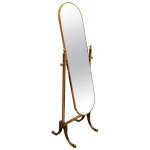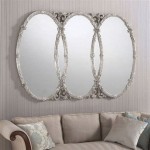How to Make a Glass Window into a Mirror
Transforming a glass window into a mirror involves applying a reflective film or coating to the glass surface. This process offers a cost-effective solution for creating mirrored surfaces in various settings, from home decor to commercial applications. Several methods exist, each with its own advantages and disadvantages.
One popular method utilizes specialized mirror films. These films are thin, flexible sheets with a reflective backing, typically made of aluminum or silver. They are available in various sizes and tints, offering flexibility in design and light transmission. Mirror film application requires careful preparation of the glass surface. The glass must be thoroughly cleaned and free of any dust, debris, or grease to ensure proper adhesion.
Cleaning the glass surface is crucial for successful mirror film application. Recommended cleaning solutions include a mixture of water and isopropyl alcohol or a dedicated glass cleaner. Applying the cleaning solution with a lint-free cloth or paper towel minimizes the risk of leaving residue. After cleaning, the glass should be thoroughly dried to prevent trapping moisture beneath the film.
Once the glass is clean and dry, the mirror film can be applied. The film typically comes with a protective backing that is peeled away gradually as the film is applied to the glass. Using a squeegee or a similar flat tool helps to smooth out the film and eliminate air bubbles. Starting from one edge and working across the surface ensures a uniform application. Trimming any excess film with a sharp blade completes the process.
An alternative to mirror film is applying a liquid mirror coating. These coatings are sprayed or painted onto the glass surface and create a reflective layer upon drying. Liquid mirror coatings offer a seamless finish, particularly useful for irregular or curved glass surfaces. However, they require more specialized equipment and expertise for application compared to mirror film.
Preparation for applying liquid mirror coatings involves similar cleaning procedures as with mirror film. The glass surface must be pristine to achieve a smooth and even coating. Additionally, masking surrounding areas is essential to prevent overspray. Depending on the specific product, multiple coats may be required to achieve the desired reflectivity.
Applying the liquid mirror coating typically involves using a spray gun or an aerosol can. Maintaining a consistent distance and speed during application ensures uniform coverage. Allowing adequate drying time between coats, as specified by the manufacturer's instructions, is crucial for optimal results. After the final coat dries, a protective sealant can be applied to enhance durability and protect the reflective surface.
Another method involves traditional silvering, a chemical process that deposits a thin layer of silver onto the glass. This method produces highly reflective mirrors, often used in professional applications. However, the process involves hazardous chemicals and requires specific safety precautions. It is generally not recommended for DIY projects due to its complexity and safety concerns.
The silvering process begins with thoroughly cleaning the glass surface. Then, a sensitizing solution is applied, followed by a silvering solution. The silver ions in the solution are reduced and deposited onto the glass surface, forming a reflective layer. A protective coating is then applied to seal the silver layer and prevent oxidation.
Choosing the right method depends on several factors, including the size and shape of the glass, the desired level of reflectivity, and the budget. Mirror films offer a cost-effective and easy-to-apply solution for flat surfaces. Liquid mirror coatings provide a seamless finish for irregular surfaces but require more specialized equipment. Traditional silvering offers the highest reflectivity but is complex and involves hazardous materials.
Regardless of the chosen method, proper surface preparation is paramount for achieving a satisfactory result. Thorough cleaning and proper application techniques ensure a smooth, reflective surface and prolong the lifespan of the mirrored surface. Following manufacturer instructions and safety guidelines ensures a successful transformation of a glass window into a functional and aesthetically pleasing mirror.
Maintaining the newly created mirror involves regular cleaning. Using a mild glass cleaner and a soft cloth prevents scratches and maintains reflectivity. Avoiding abrasive cleaners or harsh chemicals helps preserve the integrity of the reflective surface, whether it's film, coating, or a silvered layer.
Considering the various methods and their specific requirements allows for informed decision-making. Each method offers distinct advantages and disadvantages, catering to different project needs and skill levels. Careful consideration of these factors contributes to achieving a successful and long-lasting mirror conversion.

Easy Ways To Make A One Sided Mirror With Pictures Wikihow

How To Turn An Old Window Into A Mirror Pine And Prospect Home

How To Turn A Vintage Window Into Mirror An Oregon Cottage

Diy Window Pane Mirror

Diy Barn Window Mirror Decor Tutorial Nina Hendrick Home

Diy Rh French Window Pane Oversized Mirror The Rozy Home

Window Pane Mirror With Faux Antique Mercury Glass Diy
Eighteenth Century Agrarian Business Diy A Mirror From Leaded Glass Window

Mirrors Or Windows How To Make A Mirror Look And Feel Like Window

Salvaged Window Frame Diy Mirror Crafty Nest








